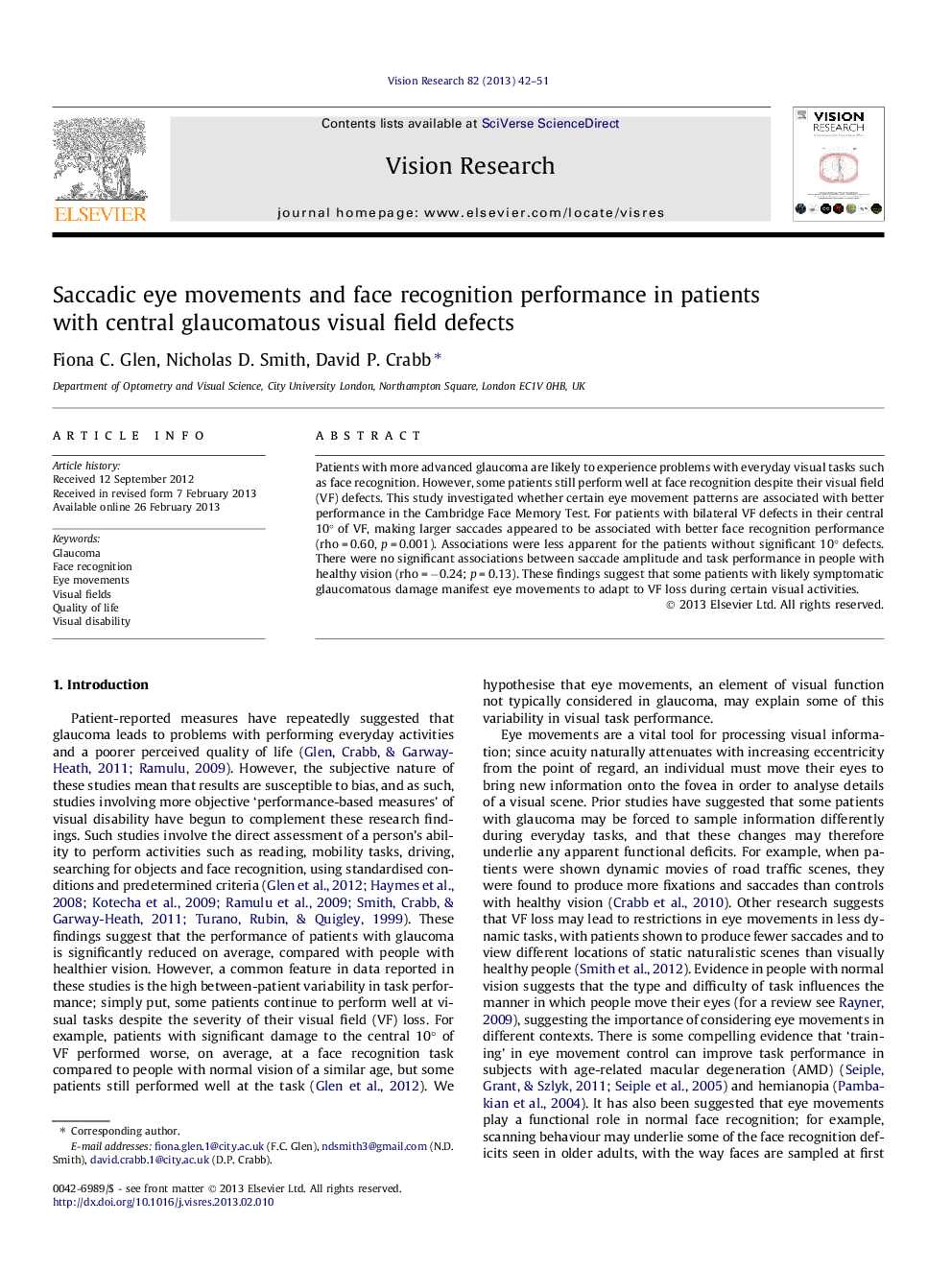| Article ID | Journal | Published Year | Pages | File Type |
|---|---|---|---|---|
| 4033816 | Vision Research | 2013 | 10 Pages |
Patients with more advanced glaucoma are likely to experience problems with everyday visual tasks such as face recognition. However, some patients still perform well at face recognition despite their visual field (VF) defects. This study investigated whether certain eye movement patterns are associated with better performance in the Cambridge Face Memory Test. For patients with bilateral VF defects in their central 10° of VF, making larger saccades appeared to be associated with better face recognition performance (rho = 0.60, p = 0.001). Associations were less apparent for the patients without significant 10° defects. There were no significant associations between saccade amplitude and task performance in people with healthy vision (rho = −0.24; p = 0.13). These findings suggest that some patients with likely symptomatic glaucomatous damage manifest eye movements to adapt to VF loss during certain visual activities.
► A novel investigation in eye movements in people with glaucoma. ► Patients who make larger saccades do better at face recognition. ► Some evidence that some patients with visual field defects adapt their eye movements.
